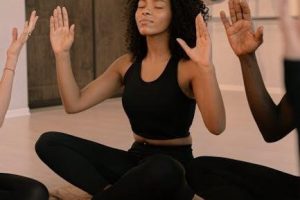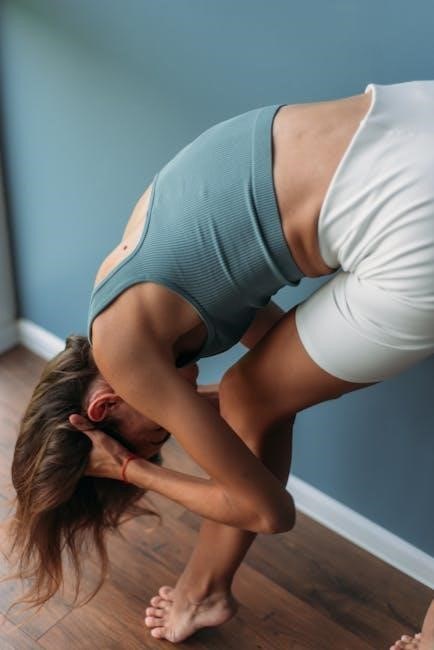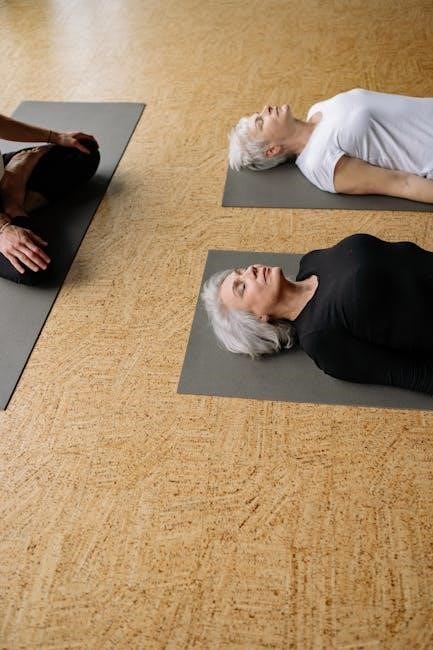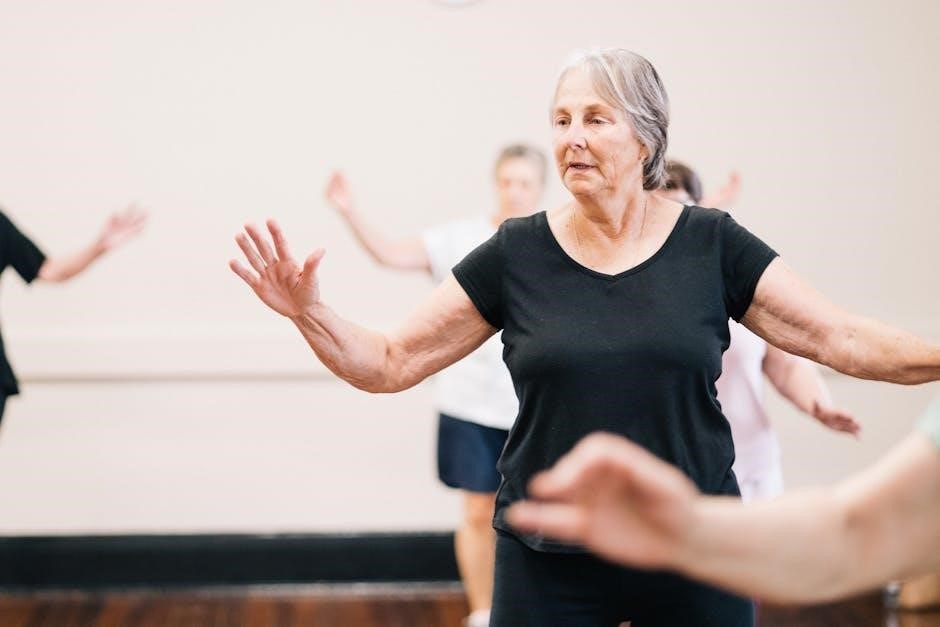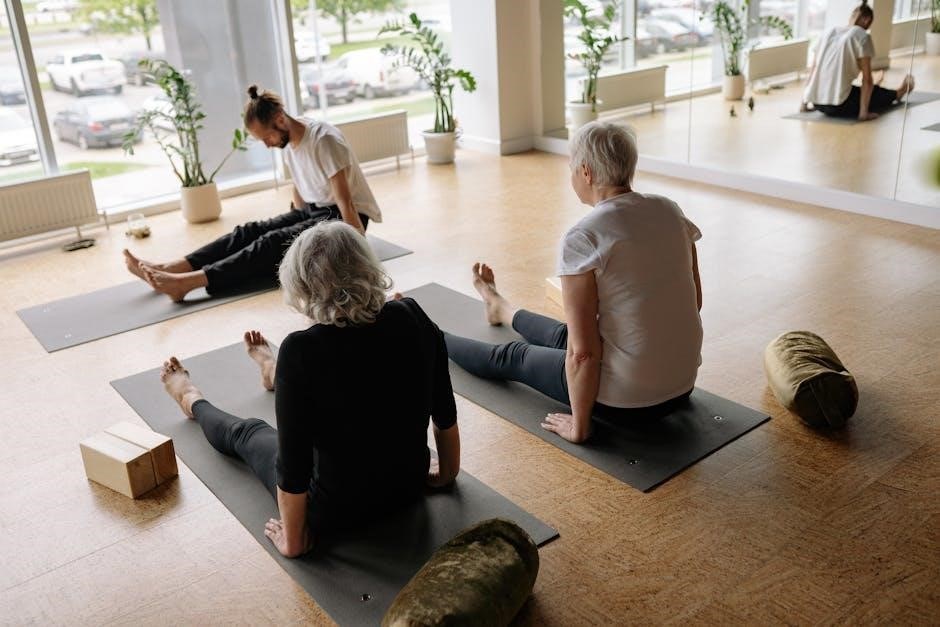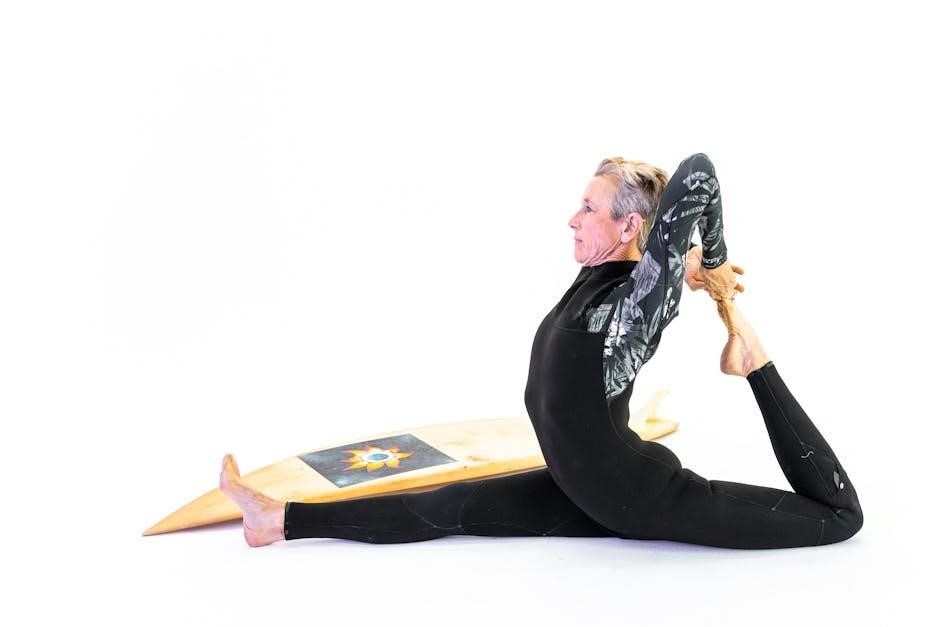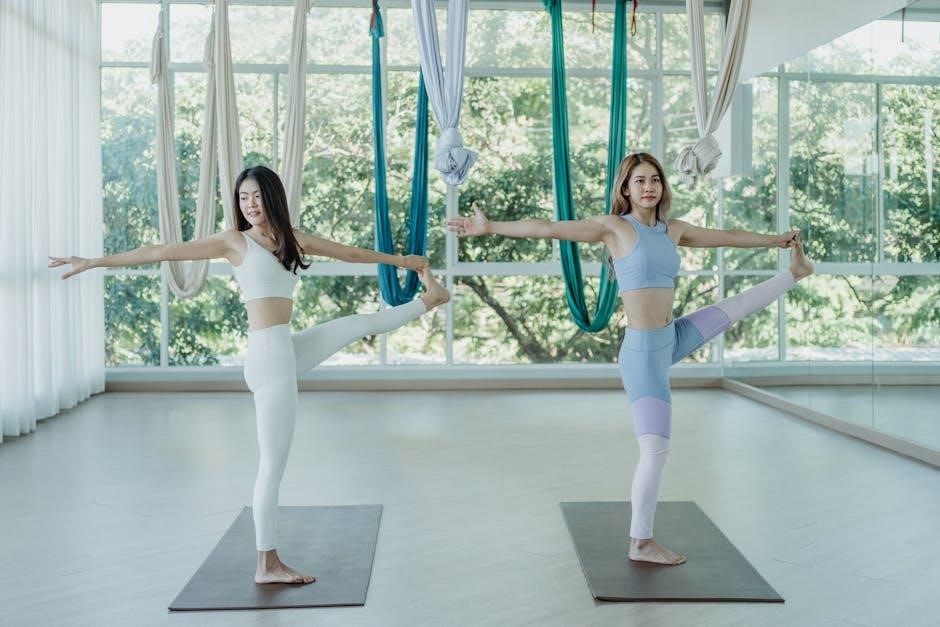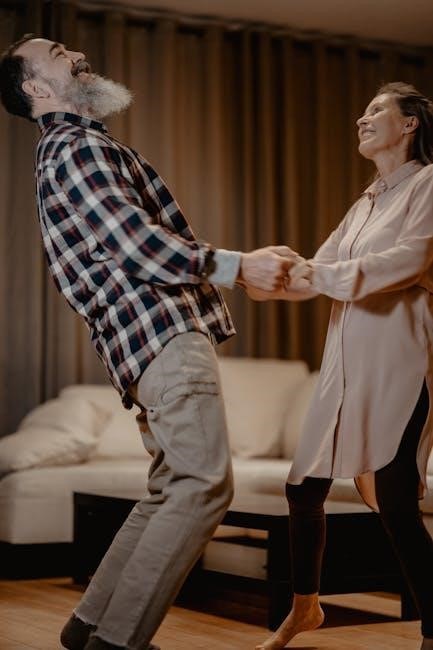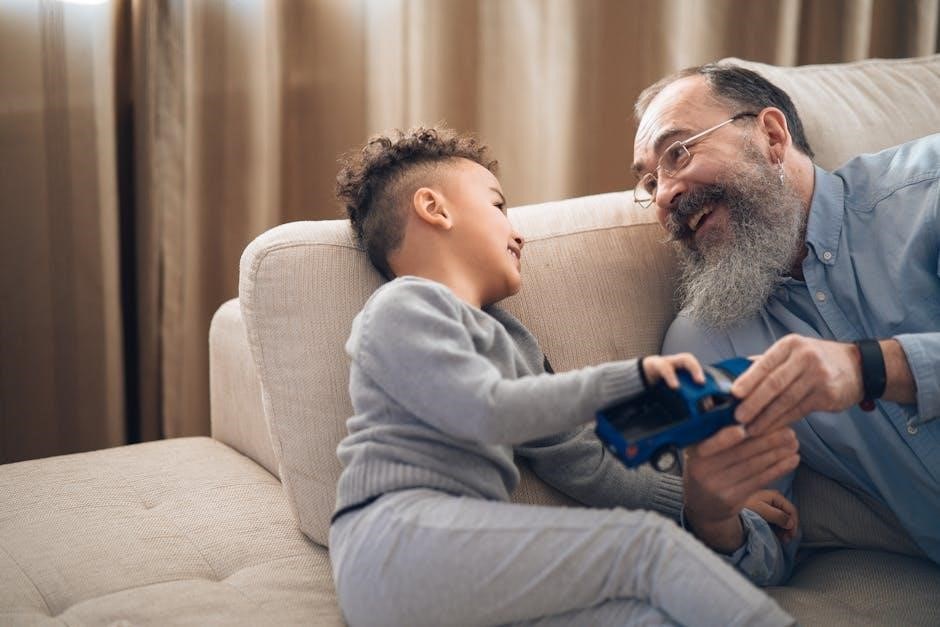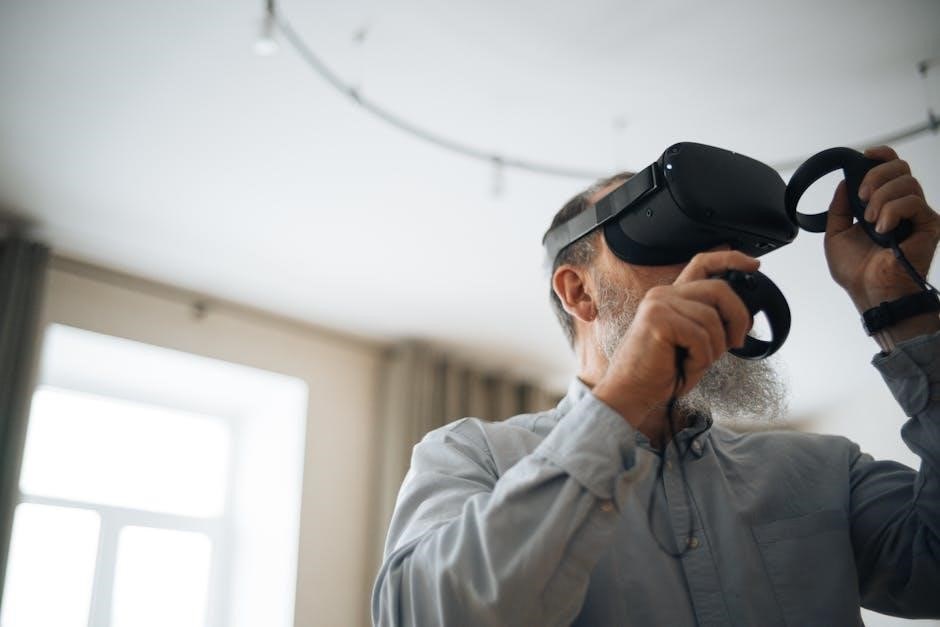therapeutic interventions cheat sheet pdf

1.1 Definition and Purpose
A therapeutic interventions cheat sheet is a concise guide listing evidence-based techniques to address mental health issues, aiding professionals in session documentation and treatment planning efficiently.
A therapeutic interventions cheat sheet is a structured guide compiling evidence-based techniques and strategies for addressing various mental health issues. It serves as a quick reference tool for therapists, enabling efficient session documentation and treatment planning. The purpose of this resource is to streamline the therapeutic process, ensuring interventions are tailored to client needs. It covers a wide range of techniques, from cognitive-behavioral interventions to mindfulness practices, providing a comprehensive overview. The cheat sheet is designed to enhance productivity, allowing professionals to focus on client interactions while maintaining effective documentation. It is particularly useful for students and experienced practitioners alike, offering a practical framework for delivering targeted support.
1.2 Importance in Therapy Practice
The therapeutic interventions cheat sheet is a vital tool in therapy practice, enhancing efficiency and consistency in treatment delivery. It provides quick access to evidence-based techniques, ensuring interventions are tailored to client needs. By streamlining note-taking and documentation, it allows therapists to maintain focus on client interactions during sessions. The cheat sheet also promotes continuity of care, offering a standardized approach to treatment planning. Its comprehensive nature ensures that practitioners can address a wide range of mental health issues effectively. This resource is particularly valuable for new therapists, as it offers a clear framework for implementing interventions. Overall, it supports best practices, improves client outcomes, and enhances the overall quality of therapeutic care.

Basic Categories of Therapeutic Interventions
Therapeutic interventions are categorized into cognitive-behavioral, emotional regulation, and mindfulness-based practices, each targeting specific mental health needs with evidence-based strategies for effective client support and recovery.
2.1 Cognitive-Behavioral Interventions
Cognitive-behavioral interventions focus on identifying and modifying negative thought patterns and maladaptive behaviors. Techniques include cognitive restructuring, behavioral activation, and exposure therapy. These interventions are highly effective for addressing anxiety, depression, and anger management by helping individuals challenge irrational beliefs and develop healthier coping strategies. CBI emphasizes the interconnectedness of thoughts, emotions, and actions, providing clients with practical tools to manage symptoms and improve functioning. By targeting specific cognitive distortions, such as catastrophizing or black-and-white thinking, these interventions promote lasting behavioral change. CBI is widely used due to its structured, goal-oriented approach, making it accessible for both therapists and clients to track progress and achieve measurable outcomes in mental health treatment.
2.2 Emotional Regulation Techniques
Emotional regulation techniques help individuals manage and modulate their emotional responses to stressful or triggering situations. These interventions focus on teaching clients skills to recognize, understand, and control their emotions. Common techniques include deep breathing exercises, grounding methods, and mindfulness practices. Emotional regulation is particularly effective for managing conditions like borderline personality disorder and post-traumatic stress disorder. By enhancing self-awareness and providing coping strategies, these techniques empower clients to respond to emotional challenges in a healthier way. Regular practice of emotional regulation can lead to improved relationships, reduced emotional intensity, and increased overall well-being. These tools are essential for fostering emotional resilience and stability in therapy settings.
2.3 Mindfulness-Based Practices
Mindfulness-based practices are therapeutic interventions that focus on cultivating present-moment awareness and nonjudgmental acceptance of thoughts, emotions, and physical sensations. These techniques, rooted in meditation and mindfulness, help clients develop greater self-awareness and emotional clarity. Common practices include mindful breathing, body scans, and mindful movement. Mindfulness-based interventions are highly effective for reducing stress, anxiety, and depression by teaching clients to observe their experiences without becoming overwhelmed. Regular practice enhances emotional resilience, improves focus, and fosters a sense of calm. These practices are widely adaptable, making them suitable for diverse populations and therapeutic settings. They promote long-term well-being by encouraging clients to embrace the present moment with curiosity and kindness.

Advanced Therapeutic Interventions
Advanced therapeutic interventions are evidence-based techniques for addressing complex mental health issues, often requiring specialized training. These interventions target deep-seated patterns, behaviors, or traumas, aiming to restructure thoughts, emotions, or relationships. Examples include dialectical behavior therapy (DBT) and trauma-focused approaches. They are designed to help clients manage intense emotions, develop coping strategies, and achieve long-term behavioral change. These interventions are particularly effective for individuals with severe mental health conditions or those who haven’t responded to basic therapies. Regular practice and consistency are key to their success, making them a cornerstone of advanced therapy.
3.1 Dialectical Behavior Therapy (DBT) Strategies
Dialectical Behavior Therapy (DBT) is a highly structured approach developed by Marsha Linehan to treat individuals with intense emotional dysregulation. It focuses on balancing acceptance and change to help clients manage emotions, behaviors, and relationships. Key DBT strategies include Mindfulness, which teaches present-moment awareness, and Distress Tolerance, which provides coping skills for crises. Emotional Regulation techniques help clients identify and manage emotions, while Interpersonal Effectiveness enhances communication and boundary-setting skills. DBT emphasizes reducing self-harming behaviors and improving quality of life. It is particularly effective for borderline personality disorder but is also applied to other conditions. Regular practice of DBT skills is essential for long-term progress and emotional stability.
3.2 Trauma-Focused Interventions
Trauma-focused interventions are tailored to address the unique needs of individuals who have experienced traumatic events. These interventions prioritize creating a safe and non-triggering environment to process trauma. Techniques such as trauma-focused cognitive-behavioral therapy (TF-CBT) are widely used to help clients reframe negative thoughts and emotions associated with traumatic experiences. Other strategies include psychoeducation to understand trauma’s impact, emotional regulation to manage distress, and narrative exposure to integrate traumatic memories into a coherent narrative. These approaches aim to reduce symptoms like hyperarousal, avoidance, and hypervigilance. Trauma-focused interventions are adaptable for various populations, including children and adults, ensuring personalized care and empowerment. Regular practice and consistent support are crucial for lasting recovery and healing.
3.3 Psychodynamic Approaches
Psychodynamic approaches focus on exploring unconscious thoughts, feelings, and past experiences to understand current behaviors and emotions. These interventions emphasize the therapeutic relationship, with techniques like free association and dream analysis to uncover repressed emotions. By examining past conflicts and unresolved issues, clients gain insight into how these influences shape their present. Psychodynamic therapy also addresses transference and countertransference to deepen understanding of interpersonal dynamics. This approach is particularly effective for clients dealing with deep-seated issues or complex emotional struggles. It encourages long-term personal growth and self-awareness, making it a valuable tool in therapeutic practice for lasting change and emotional resilience.

Specialized Interventions for Specific Populations
Specialized interventions cater to distinct needs of various groups, ensuring tailored approaches for children, adults, and individuals with unique conditions, fostering culturally sensitive and effective care.
4.1 Interventions for Children and Adolescents
Therapeutic interventions for children and adolescents focus on age-appropriate strategies to address developmental, emotional, and behavioral challenges. Play therapy is often used to help younger children express and process emotions. For older children and teens, cognitive-behavioral techniques can effectively target anxiety, depression, or behavioral issues. Emotional regulation skills, such as identifying and managing feelings, are taught through simple, engaging exercises. Mindfulness practices, like deep breathing or visualization, can help reduce stress and improve focus. Additionally, interventions may incorporate creative expression, such as art or music therapy, to foster self-expression and healing. Involving parents or guardians in therapy can enhance outcomes by promoting consistency and support at home.
4.2 Interventions for Adults with Anxiety Disorders
Therapeutic interventions for adults with anxiety disorders often focus on evidence-based approaches to reduce symptoms and improve quality of life. Cognitive-behavioral therapy (CBT) is widely used to identify and challenge negative thought patterns, while exposure therapy helps individuals gradually confront feared situations. Relaxation techniques, such as deep breathing and progressive muscle relaxation, can alleviate acute anxiety. Mindfulness-based stress reduction (MBSR) encourages present-moment awareness to reduce worry. Medications, such as SSRIs, may be integrated with therapy for severe cases. Lifestyle adjustments, including regular physical activity, balanced nutrition, and adequate sleep, further support symptom management. These interventions aim to empower individuals to manage anxiety effectively and independently.
4.3 Interventions for Individuals with Autism Spectrum Disorder
Therapeutic interventions for individuals with Autism Spectrum Disorder (ASD) focus on improving communication, social skills, and adaptive behaviors. Applied Behavior Analysis (ABA) therapy is widely recognized for enhancing behavioral outcomes by breaking skills into manageable steps. Occupational therapy addresses sensory processing challenges and daily living skills. Speech therapy targets communication difficulties, such as verbal and non-verbal interactions. Positive Behavioral Support (PBS) emphasizes understanding and addressing the root causes of challenging behaviors. Augmentative and Alternative Communication (AAC) devices help those with limited verbal abilities express themselves. Social skills training fosters meaningful relationships and community integration. A personalized, multi-disciplinary approach, involving families and caregivers, is essential for maximizing progress and fostering independence.

Tools and Resources for Therapeutic Interventions

Essential tools include assessment forms, progress trackers, and therapeutic workbooks. Resources like mental health apps and evidence-based manuals enhance intervention planning and execution effectively.
5.1 Trigger Identification and Management
Trigger identification is a critical step in therapeutic interventions, helping clients recognize stimuli that provoke negative reactions. Therapists use tools like trigger journals or checklists to identify patterns. Managing triggers involves techniques such as mindfulness, grounding, or cognitive restructuring to reduce their impact. Early recognition allows clients to employ coping strategies effectively. This process enhances emotional regulation and reduces relapse risks. Tools like trigger hierarchy lists help prioritize and address triggers systematically. By teaching clients to anticipate and prepare for triggers, therapy empowers them to manage emotions and behaviors more constructively. Effective trigger management is essential for long-term recovery and resilience.
5.2 Assessment Tools for Intervention Planning
Assessment tools are essential for planning therapeutic interventions, providing insights into client needs and progress. Standardized tests, questionnaires, and behavioral observations are commonly used to gather data. These tools help identify symptoms, cognitive patterns, and emotional functioning. For example, depression or anxiety scales assess severity, while functional assessments evaluate daily living skills. Data from these tools guide goal setting and intervention selection, ensuring personalized approaches. Progress monitoring tools track changes over time, helping adjust strategies as needed. Accurate assessments ensure interventions are tailored, enhancing effectiveness and client outcomes. Regular re-assessment allows therapists to refine plans, promoting continuous improvement and alignment with client goals. This step is vital for evidence-based practice.
5.3 Documentation Tips for Progress Notes
Effective documentation of progress notes is crucial for tracking client progress and planning interventions. Use clear, concise language to detail session specifics, including interventions used and client responses. Maintain objectivity by focusing on observable behaviors and measurable outcomes. Include dates, session numbers, and specific goals addressed. Ensure compliance with confidentiality standards like HIPAA. Regularly review and update notes to reflect changes in treatment plans or client status. Use standardized formats for consistency, such as SOAP notes (Subjective, Objective, Assessment, Plan). Accurate documentation aids in communication among healthcare providers and supports continuity of care. It also serves as a legal record of services provided. Consistent and detailed notes enhance professionalism and client outcomes.

Case Studies and Real-World Applications
Explore real-life examples demonstrating the effectiveness of therapeutic interventions. Case studies highlight evidence-based practices, linking theory to practical outcomes, and showcasing successful applications in diverse clinical scenarios.
6.1 Successful Outcomes with Cognitive-Behavioral Interventions
Cognitive-behavioral interventions have consistently shown positive results in addressing anxiety, depression, and phobias. For instance, cognitive restructuring helps individuals identify and challenge negative thought patterns, leading to improved emotional regulation. Exposure therapy, a key CBT technique, has been instrumental in reducing avoidance behaviors in individuals with post-traumatic stress disorder (PTSD). Case studies highlight how CBT fosters long-term coping strategies, empowering clients to manage triggers independently. One notable example involved a patient with social anxiety who, through gradual exposure, successfully navigated public speaking scenarios. Such outcomes underscore CBT’s effectiveness in creating sustainable behavioral and emotional changes, making it a cornerstone of modern therapeutic practice.
6.2 Real-Life Examples of Emotional Regulation Techniques
Emotional regulation techniques are essential for managing overwhelming feelings in daily life. One effective method is deep breathing, which helps reduce stress and anxiety by slowing down heart rates. For example, a person experiencing a panic attack can use belly breathing to calm their nervous system. Another technique is grounding, such as the “5-4-3-2-1” exercise, which focuses on sensory awareness to anchor oneself in the present moment. Journaling is also a powerful tool, allowing individuals to process emotions and gain clarity. These techniques empower people to respond to challenges rather than react impulsively, fostering emotional resilience and well-being in various situations.
6.3 Practical Applications of Mindfulness-Based Practices
Mindfulness-based practices offer practical tools for managing daily stress and enhancing mental well-being. One common technique is body scan meditation, which helps individuals release physical tension by focusing on sensations in the body. Another is loving-kindness meditation, fostering compassion toward oneself and others. In the workplace, mindfulness can reduce stress and improve focus through brief breathing exercises. For individuals with chronic pain, mindfulness practices can help shift their relationship with pain, reducing its intensity. Additionally, mindful eating promotes healthier habits by encouraging awareness of hunger cues and savoring food. These practices are versatile and can be adapted to various life challenges, making them a valuable addition to therapeutic interventions.

How to Create a Personalized Therapeutic Interventions Cheat Sheet
Start by identifying client needs and goals, ensuring interventions align with their objectives. Prioritize techniques based on effectiveness and relevance to specific scenarios. Regularly update the cheat sheet to reflect progress and adapt to new challenges, keeping it concise and accessible for quick reference.
7.1 Identifying Client Needs and Goals
Identifying client needs and goals is the foundation of creating an effective therapeutic interventions cheat sheet. Conduct a comprehensive assessment to understand the client’s specific challenges, strengths, and objectives. Use standardized assessment tools, interviews, and observations to gather detailed information. Collaborate with the client to set clear, measurable, and achievable goals aligned with their priorities. Consider their personal values, cultural background, and lifestyle to ensure interventions are tailored to their unique circumstances. Regularly reassess and update the goals as progress is made or new challenges arise. This personalized approach ensures the cheat sheet remains relevant and effective throughout the therapeutic journey.
7.2 Prioritizing Interventions for Specific Scenarios

Prioritizing interventions for specific scenarios ensures that therapeutic strategies are applied effectively. Begin by assessing the urgency and relevance of each intervention to the client’s situation. Use a tiered approach, where high-priority interventions address immediate needs, such as crisis management or symptom reduction. Lower-priority interventions can focus on long-term goals, like building resilience or improving relationships. Consider the client’s preferences and the context of each scenario to tailor your approach. For example, cognitive-behavioral techniques may be prioritized for anxiety, while mindfulness practices might be emphasized for stress management. Regularly review and adjust priorities as the client’s needs evolve, ensuring interventions remain targeted and impactful.
7.3 Regular Updates and Adaptations
Regular updates and adaptations are crucial for maintaining the effectiveness of a therapeutic interventions cheat sheet. As client needs evolve, interventions must be refined to address new challenges and goals. Schedule periodic reviews of the cheat sheet to ensure it remains relevant and aligned with the client’s progress. Incorporate feedback from sessions and assess the impact of current strategies. Update the cheat sheet with new techniques or tools that emerge from ongoing education or research. Adaptations should also reflect changes in the client’s environment or personal circumstances. This dynamic approach ensures the cheat sheet remains a valuable, living resource for therapy, fostering continuous growth and improvement.

Future Trends in Therapeutic Interventions
Future trends include integrating advanced digital tools, AI-driven insights, and personalized approaches, enhancing accessibility and efficacy in mental health care.
8.1 Integration of Digital Tools and Apps
The integration of digital tools and apps is revolutionizing therapeutic interventions by enhancing accessibility and engagement. Teletherapy platforms now offer remote sessions, making mental health care more accessible to diverse populations. Mental health apps, such as those providing CBT exercises or mood tracking, empower clients to practice skills independently. Wearable devices monitor physiological metrics, offering insights into stress and emotional states. AI-driven apps personalize interventions based on client data, improving outcomes. Virtual reality (VR) is being used for exposure therapy, simulating real-world scenarios in a controlled environment. These tools not only expand the reach of therapy but also provide innovative ways to track progress and tailor interventions. Secure platforms ensure confidentiality, maintaining trust in the therapeutic process.
8.2 Emerging Techniques in Mental Health Care
Emerging techniques in mental health care are transforming how therapeutic interventions are delivered and experienced. Psychedelic-assisted therapy, using substances like psilocybin or MDMA, is gaining traction for treating conditions such as PTSD and depression. Transcranial magnetic stimulation (TMS) and transcranial direct current stimulation (tDCS) offer non-invasive ways to modulate brain activity. Ketamine therapy is being explored for rapid relief in severe depression. Virtual reality (VR) exposure therapy is increasingly used to simulate real-world scenarios for anxiety disorders. AI-driven chatbots provide immediate support and coping strategies. These innovations enhance traditional methods, offering more personalized and efficient approaches to mental health care. They also address barriers such as accessibility and stigma, making therapy more inclusive and effective.
8.3 Role of AI in Therapy Interventions
Artificial intelligence (AI) is revolutionizing therapeutic interventions by enhancing precision, accessibility, and personalization. AI-driven tools analyze client data to tailor interventions, improving outcomes. Chatbots and virtual assistants provide immediate support, offering coping strategies and resources. Predictive analytics identify early warning signs of mental health crises, enabling proactive care. AI also streamlines documentation, freeing therapists to focus on client interactions. Ethical considerations, such as data privacy and bias, are critical as AI becomes integral to therapy. By augmenting human capabilities, AI empowers therapists to deliver more effective and compassionate care, ensuring interventions are both efficient and client-centered. This integration marks a significant leap in mental health care delivery.
Therapeutic interventions are essential for addressing mental health challenges, offering tailored strategies to enhance well-being and resilience. By integrating evidence-based practices and emerging technologies, therapy continues to evolve, ensuring compassionate and effective care for diverse populations. This cheat sheet serves as a valuable resource for practitioners, empowering them to deliver impactful interventions that foster lasting positive change.
9.1 Summary of Key Points
This Therapeutic Interventions Cheat Sheet provides a comprehensive overview of evidence-based strategies for mental health care. It covers cognitive-behavioral interventions, emotional regulation techniques, and mindfulness-based practices, offering practical tools for therapists. Advanced methods like DBT and trauma-focused interventions are explored, alongside specialized approaches for children, adults with anxiety, and individuals with autism. The guide emphasizes the importance of personalized intervention planning, supported by trigger management, assessment tools, and effective documentation. Real-world applications and case studies illustrate successful outcomes, while future trends highlight the integration of digital tools and AI in therapy. This resource serves as a valuable reference for creating adaptable, client-centered treatment plans.
9.2 Final Thoughts on the Importance of Therapeutic Interventions
Therapeutic interventions are a cornerstone of mental health care, offering evidence-based strategies to address diverse challenges. They empower individuals to manage symptoms, develop coping skills, and achieve lasting change. The Therapeutic Interventions Cheat Sheet serves as a valuable resource, providing clarity and guidance for therapists to deliver effective care. By integrating innovation and compassion, these interventions foster resilience and improve quality of life. As mental health needs evolve, the adaptability of therapeutic interventions ensures they remain a vital tool for promoting well-being. This cheat sheet underscores the importance of tailored approaches, emphasizing the transformative power of therapy in addressing complex mental health issues.
